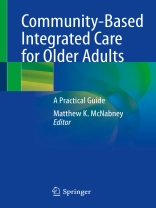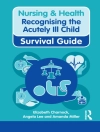Community-based integrated care (CBIC) is designed to keep older adults where they want to be – at home and out of hospitals and nursing homes. The Program of All-Inclusive Care for the Elderly (PACE) is an example of successful CBIC, established in 1985 as an innovative solution to pervasive issue: how to provide integrated care to a high-risk population of older adults that promotes community living (not a nursing home) in a cost-effective manner.
This unique guide provides readers with a concise yet informative base of understanding of PACE as well as a “deep dive” into the components and job roles that will serve as a reference for existing PACE providers and will inform those who are considering the possibility of developing a new PACE program. Chapters are organized into five thematic sections. Part one presents both domestic and international perspectives on CBIC, with part two delving deeper into the US PACE model, including its history, policy evolution and effectiveness. Specifics regarding the organization and management of PACE and the essential roles and positions comprise parts three and four, respectively, from leadership and the involvement of the state to the roles of the social worker, nurse, nutritionist, rehabilitation specialist, and more. Care planning, coordination and end of life care round out part five.
In addition to geriatricians and other clinical practitioners involved with the care of older patients, Community-Based Integrated Care for Older Adults is also a resource for scholars, policy makers and the general public who are interested in innovations in long-term care that provide older adults with alternatives to nursing homes.
Mục lục
Part I. Community-based Integrated Care.- The International Perspective on Community-based Integrated Care.- The United States Perspective on Community-based Integrated Care.- Part II. The U.S. Prototype: Program of All-Inclusive Care for the Elderly (PACE).- History and Policy Evolution of the PACE Model of Care.- Evaluating the Effectiveness of PACE.- Part III. The Organization and Management of PACE.- Leadership in PACE.- Starting and Growing a PACE Program.- The State’s Role in the Implementation of PACE.- Medication Management and Part D Coverage in PACE.- Core Components of the Typical PACE Center.- Part IV. The PACE Team and Essential Roles.- The Interdisciplinary Team and Process in PACE.- The Role of the Social Worker in PACE.- Recreational Therapy in PACE.- Transportation in PACE.- Direct Care Providers in PACE.- Nursing in PACE.- Home Care in PACE.- Medical Providers and PACE.- The Medical Director in PACE.- Rehabilitation in PACE.- The Dietician-Nutritionist in PACE.- Part V. Special Aspects of the PACE Model.- Care Planning in PACE.- Care Coordination and Transitions of Care in PACE.- End of Life Care in PACE.
Giới thiệu về tác giả
Matthew K. Mc Nabney, MD, Medical Director, Program for All-Inclusive Care of the Elderly (PACE), Professor of Medicine, Division of Geriatric Medicine and Gerontology, Johns Hopkins University School of Medicine, Baltimore, MD, USA












